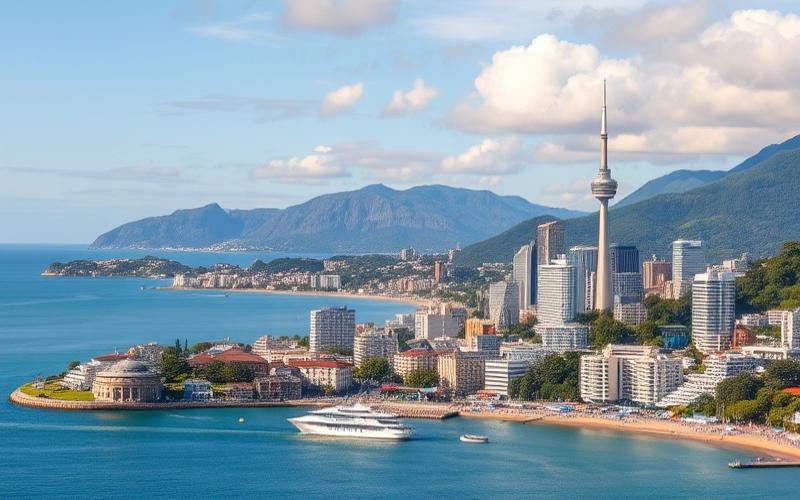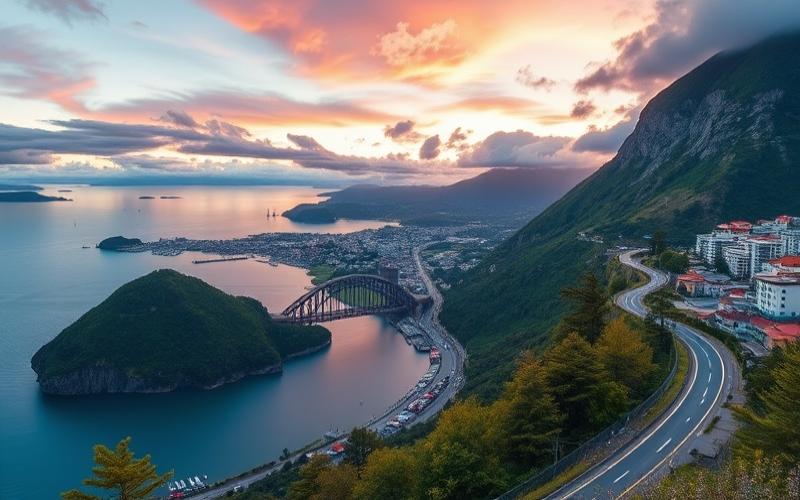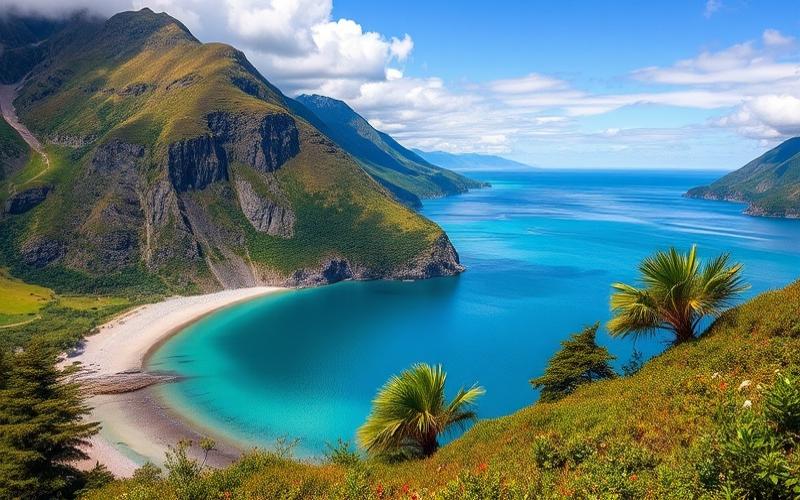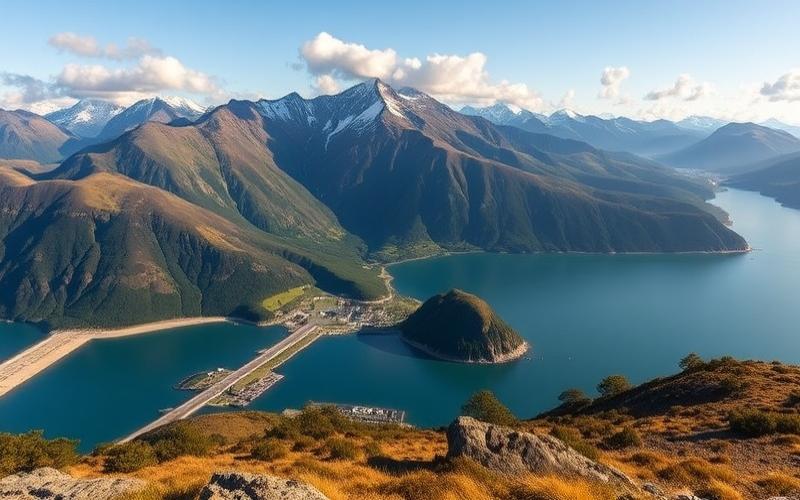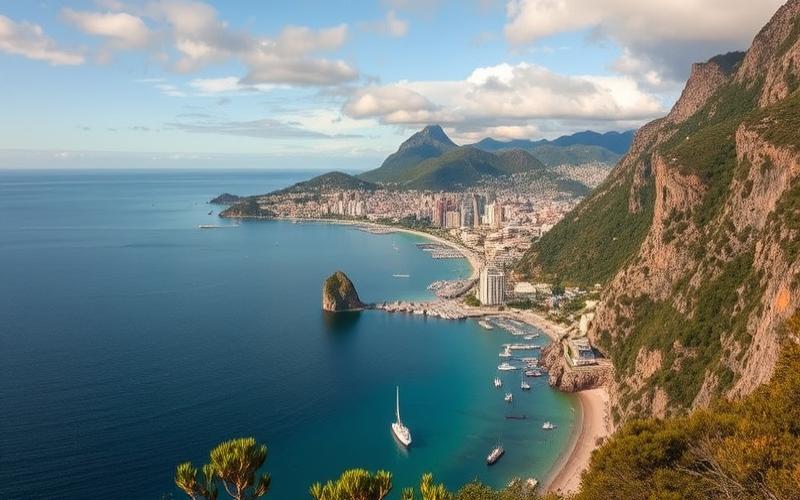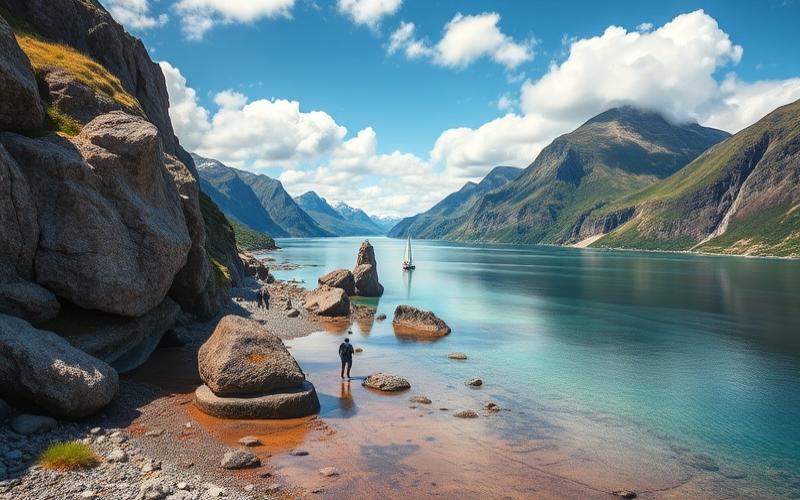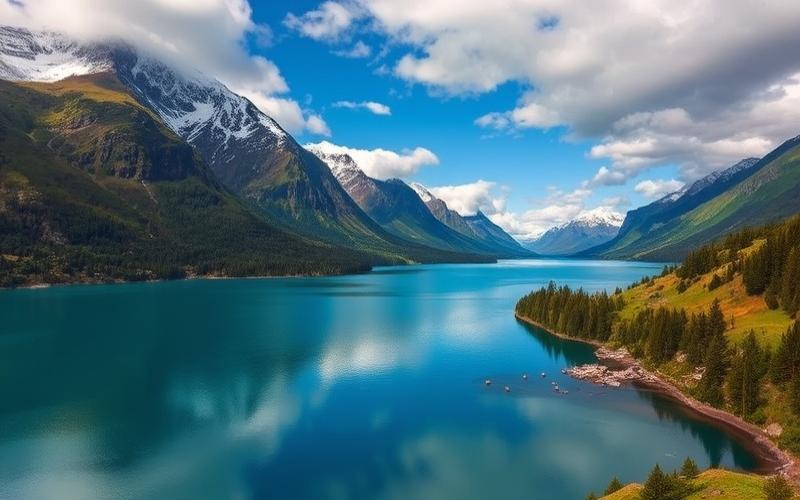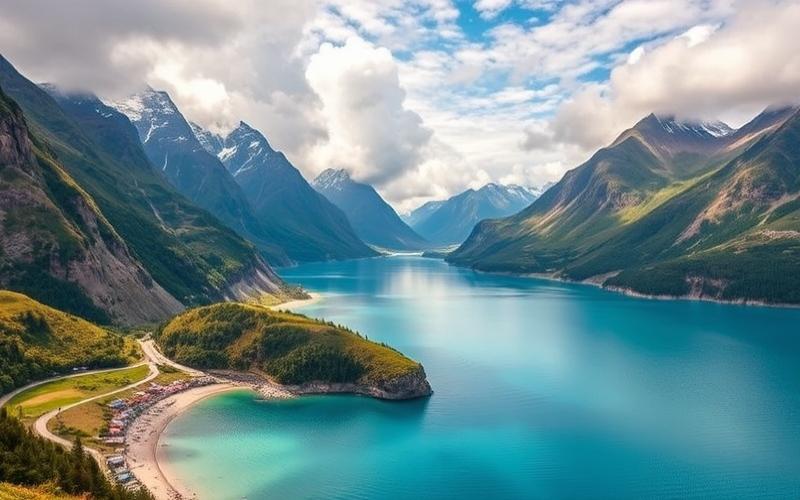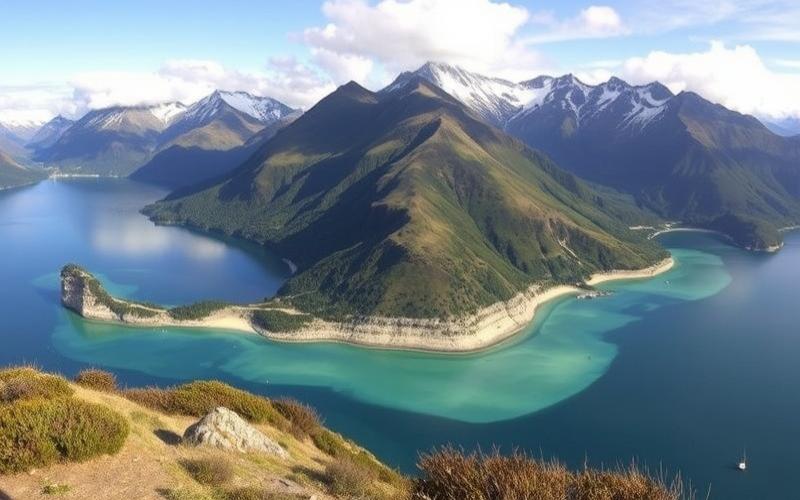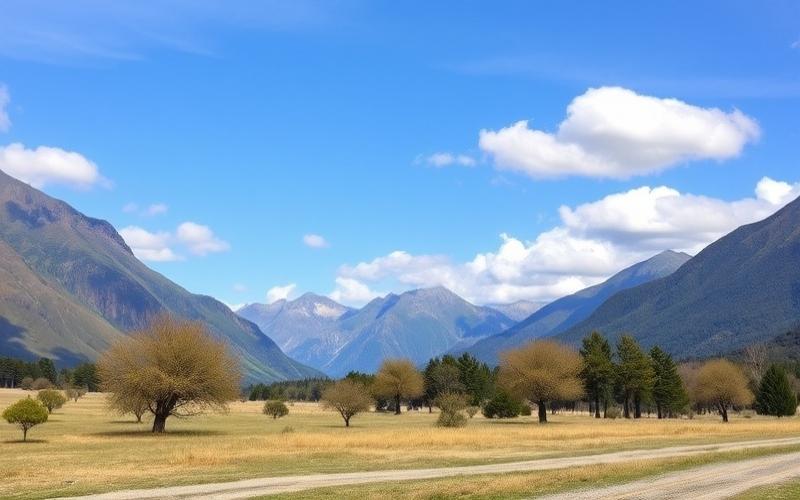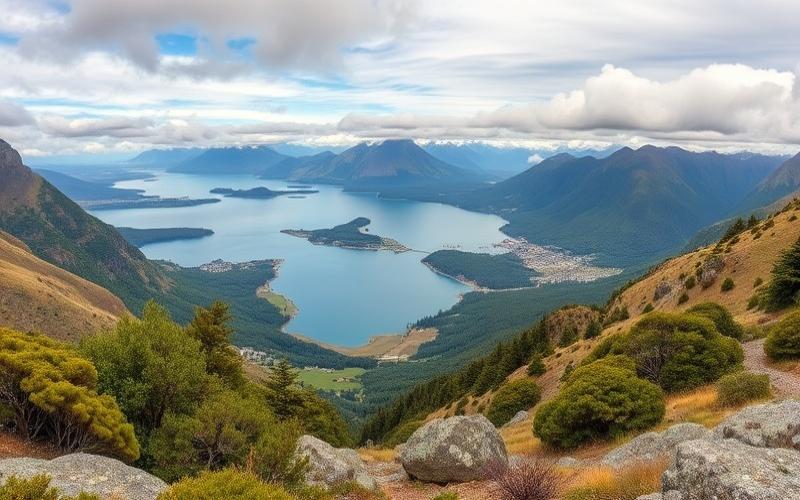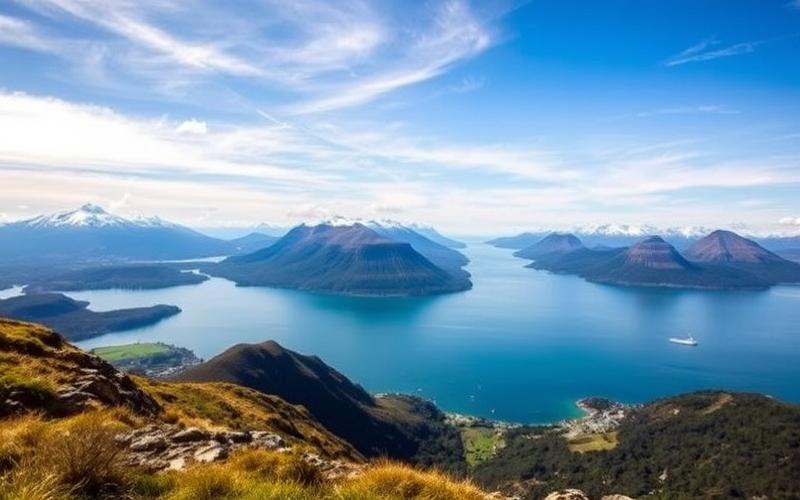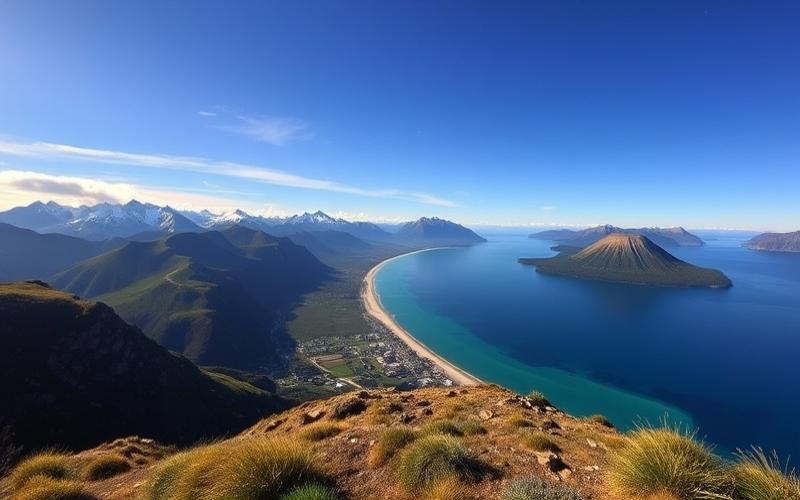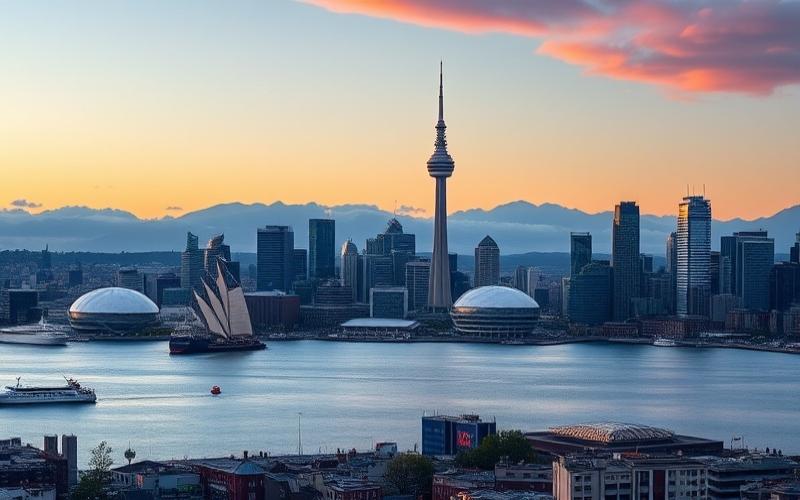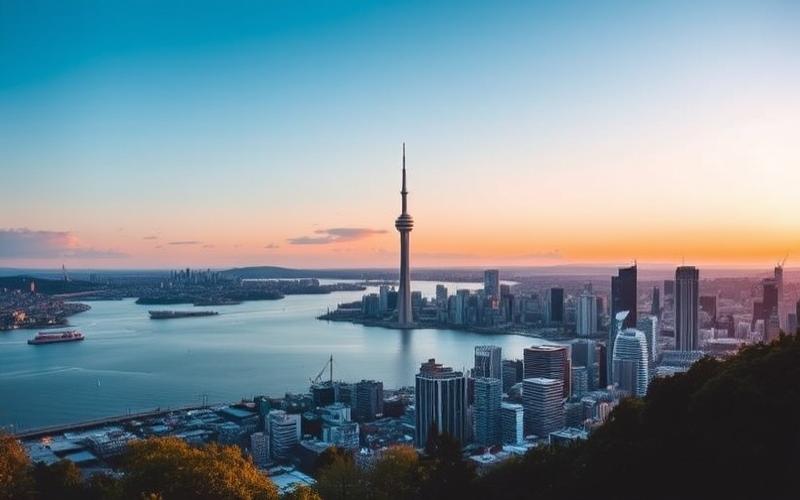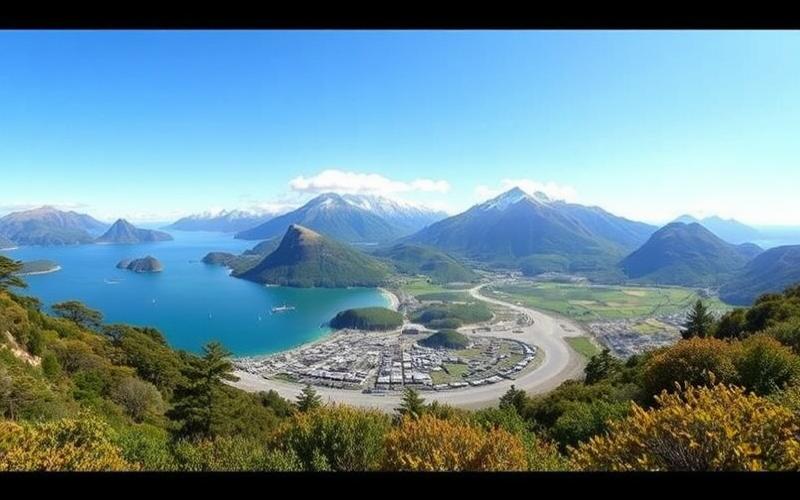
 Published on and written by Cyril Jarnias
Published on and written by Cyril Jarnias
New Zealand, known for its breathtaking landscapes and rich culture, now offers new investment opportunities in its authentic villages by 2025. These picturesque and sometimes overlooked localities are transforming into veritable gold mines for those seeking promising investments.
With growing demand for sustainable tourism and unique local experiences, investing in these villages represents not only a chance to diversify your portfolio, but also to positively contribute to the local economy while preserving the unique charm of these places.
Dive into this article to discover how to take advantage of this rising trend and explore the fascinating possibilities these New Zealand villages have to offer.
Highlighting the Assets of Authentic Villages in New Zealand
New Zealand’s authentic villages represent havens of authenticity, where every visit or investment aligns with a unique approach, at the crossroads of cultural and natural heritage. Their picturesque atmosphere is reflected in streets lined with historic houses, preserved landscapes, and a peaceful ambiance that contrasts with urban hustle. The local architecture, often inherited from the colonial era or inspired by Maori traditions, creates an aesthetic setting rarely matched elsewhere.
The cultural richness of these villages is a major asset for investors. Welcoming local communities proudly perpetuate their traditions, whether through traditional cuisine (like hangi), Maori song and dance performances (haka), or the oral transmission of ancestral knowledge. Iconic examples like Whakarewarewa or Tamaki Maori Village offer visitors total immersion in the daily and festive life of the inhabitants.
The warm welcome from local communities facilitates the rapid integration of newcomers and strengthens the sense of belonging to a unique place.
Proximity to the country’s iconic natural sites—snow-capped mountains, ancient forests, wild beaches—multiplies opportunities to develop varied tourist activities: guided hikes, marine wildlife watching (dolphins in Akaroa), water sports, or bike rides along scenic trails.
The quality of life is exceptional: clean air, low population density, and easy access to essential services ensure well-being and tranquility. Modern infrastructure (well-maintained roads, high-speed internet) coexists harmoniously with the natural environment without compromising its integrity.
Assets of New Zealand Villages
| Village | Main Asset | Natural Proximity | Example of Tourist Activity |
| Arrowtown | Historic mining heritage | Otago Mountains | Guided historical tours |
| Akaroa | French influence | Marine bay | Whale/dolphin excursions |
| Russell | Maritime history | Beaches/forests | Cruises & fishing |
| Rotorua/Whakarewarewa | Living Maori culture | Geothermal parks | Dinner shows & spa |
Non-exhaustive list of economic benefits for investors:
- Sustained growth in rural tourism: Demand for authentic experiences continues to increase.
- Economic diversification: Opportunity to invest in local hospitality (eco-friendly bed and breakfasts), traditional restaurants, or sports activities.
- Heritage enhancement: Renovation/eco-friendly restoration encouraged by local authorities.
- Dynamic local professional networks: Technical support for new projects through village associations.
Some concrete examples:
- Arrowtown, a former mining town with intact charm.
- Akaroa, a French village nestled in the heart of a protected bay.
- Russell, a historic port renowned for its maritime authenticity.
According to Tourism New Zealand (2024), nearly 40% of international visitors now prefer a rural experience during their stay; this proportion is expected to grow significantly by 2025 thanks to the continuous enhancement of the local agritourism and ecotourism sector.
The market will also benefit from the expected post-pandemic recovery in the “slow tourism” segment (+12% forecast for 2025 according to NZ Tourism Board). These figures confirm that investing in authentic New Zealand villages fully aligns with a sustainable trend beneficial for all stakeholders.
Good to know:
New Zealand’s authentic villages captivate with their picturesque atmosphere, preserved local culture, and proximity to natural wonders like fjords and volcanoes. The warm welcome from residents and exceptional quality of life are serious attractions for investors. These villages, equipped with infrastructure promoting sustainable development, offer a solid foundation for thriving economic and tourism projects. For example, Arrowtown, known for its historic houses, and Akaroa, famous for its French heritage, attract more visitors each year. According to the latest statistics, rural tourism in New Zealand is experiencing notable growth with a projected 20% increase by 2025, reinforcing the interest in investing in these places with multiple assets.
Why Rural Real Estate in New Zealand is a Profitable Investment
Rural real estate in New Zealand is attracting more and more investors, particularly due to its growing profitability and favorable prospects for the coming years.
Recent Evolution and Market Projections
- Between 2021 and 2024, the New Zealand real estate market experienced a significant correction: prices fell by about 18 to 20% after a strong post-COVID surge.
- Since late 2024, the trend has reversed. Prices are starting to rise: a 3.8% increase is expected in 2025 according to several specialized analyses.
- CoreLogic even forecasts a price increase of about 5% and a 10% rise in transaction volume for the year.
- Long-term (up to 2027), the projected average annual growth is around +4.3%.
| Year | Annual Variation (%) | Context |
| Late 2021 | Historic peak | Post-COVID surge |
| Late 2024 | -18% to -20% | Correction after spike |
| Forecast ’25 | +3.8% to +5% | Confirmed recovery |
Economic Factors Influencing Profitability
- Recent monetary easing: reduction in the official cash rate by the RBNZ (-225 basis points) and decline in bank rates (-20%), facilitating real estate investment financing.
- Government incentives for rural development (aid for first-time investors, subsidies for renovation/energy efficiency).
- Increased demand since the pandemic for secondary or primary residences in less dense environments.
- Attractive rental yields: with the gradual return of tourism and the rise of remote work, some rural areas show net yields higher than major urban centers.
Concrete Examples of Attractive Rural Villages
Some localities have stood out due to their recent performance:
| Village/Region | Identified Opportunities |
| Wanaka | Strong seasonal demand (nature/ski tourism) |
| Raglan | Surf & lifestyle appeal – high rents |
| Martinborough | Wine growth – short-term rentals |
In these localities, some investors have seen their properties appreciate by up to +12% over two years while generating stable rental income.
Environmental Assets and Quality of Life
- Preserved natural setting (lakes, mountains)
- Low urban density
- Easy access to sports/outdoor activities
- Tight-knit communities
- Environment conducive to family well-being
These elements attract families, retirees, and remote workers alike.
Potential Challenges and Mitigation Strategies
Main challenges:
- Cyclical volatility: alternating bullish/bearish phases
- Risks related to climate/local agriculture
- Lower liquidity compared to urban markets
To maximize profits despite these obstacles:
- Diversify rural investments geographically
- Prioritize areas near tourist infrastructure or already benefiting from demographic influx related to remote work/post-pandemic
- Secure income through seasonal/flexible rentals rather than exclusively long-term leases
In summary, investing in rural real estate in New Zealand today constitutes a profitable strategy driven by the expected recovery of the national market until 2027. Local economic incentives coupled with renewed demand make this sector particularly attractive despite some structural risks.
Good to know:
Rural real estate in New Zealand is a profitable investment thanks to the steady rise in property prices, reinforced by growing demand for post-pandemic secondary residences. In recent years, prices have increased significantly, and projections until 2025 indicate continued progression, favored by government incentives aimed at revitalizing rural areas. Villages like Arrowtown and Akaroa perfectly illustrate the potential for attractive rental yields, supported by high quality of life, a preserved natural environment, and appeal for local tourism. Investors can optimize their profit by overcoming challenges such as access to infrastructure and basic services through measures like collaborating with local advisors and participating in community development programs.
The Authenticity and Heritage of New Zealand Villages as a Lever for Attractiveness
The authenticity and heritage of New Zealand villages constitute a powerful lever of attractiveness for investors, by valuing both local cultural identity and tourism potential. Several villages are recognized for their unique history and culture, thus attracting travelers seeking authentic experiences and investors eager to engage in sustainable dynamics.
Examples of Iconic Villages:
- Rotorua: famous for its traditional Maori villages such as Te Puia, where visitors discover history, ancestral rituals, and indigenous craftsmanship.
- Christchurch: a city with rich colonial and Maori heritage, home to museums like the Canterbury Museum showcasing regional cultural diversity.
- Coromandel Peninsula: renowned for its preserved landscapes and strong community identity.
Tourism Trends Favoring Authenticity:
- Growth of cultural tourism favoring the discovery of local heritage (gastronomy, craftsmanship, traditions).
- Search for immersive experiences in rural or indigenous communities.
- Marked preference for destinations offering a balance between preserved nature and historical heritage.
Potential Economic Impacts:
- Direct generation of local jobs (cultural guides, artisans).
- Development of tourist infrastructure respectful of the natural setting.
- Economic diversification benefiting local small businesses.
Government or Local Initiatives Aimed at Preserving This Heritage:
| Initiative | Main Objective | Expected Result |
|---|---|---|
| UNESCO Listing (e.g., Tongariro National Park) | Protection of cultural landscape | Conservation & increased attractiveness |
| Support for museums/cultural centers | Educational & heritage enhancement | Awareness & transmission |
| Sustainable development programs | Integration of ecology/culture | Responsible investments |
Recommended Strategies for Integrating These Aspects into an Investment Project:
- Partner with local communities to ensure a respectful, participatory approach.
- Highlight immersive experiences around living heritage (thematic accommodations, artisan workshops).
- Adopt communication focused on environmental preservation linked to tourism development.
Integrating cultural authenticity and environmental sustainability today constitutes a major competitive advantage for attracting investors sensitive to social issues as much as economic profitability.
Good to know:
The authenticity and heritage of New Zealand villages, such as Russell, the first colonial village, or Akaroa, with its French heritage, represent a significant lever of attractiveness for investors seeking projects that bet on authenticity and history. Faced with tourists in search of unique and immersive experiences, New Zealand benefits from a tourism trend valuing local cultural discoveries, which stimulates the local economy by promoting craftsmanship and services. The New Zealand government, in collaboration with local communities, has implemented initiatives to preserve and promote these heritages, making these villages even more accessible to investments. To maximize the attractiveness of these projects, it is crucial to integrate strategies that respect and highlight the unique character of the places, such as hiring local artisans and establishing authentic tourist experiences, while ensuring they meet modern visitor expectations.
Disclaimer: The information provided on this website is for informational purposes only and does not constitute financial, legal, or professional advice. We encourage you to consult qualified experts before making any investment, real estate, or expatriation decisions. Although we strive to maintain up-to-date and accurate information, we do not guarantee the completeness, accuracy, or timeliness of the proposed content. As investment and expatriation involve risks, we disclaim any liability for potential losses or damages arising from the use of this site. Your use of this site confirms your acceptance of these terms and your understanding of the associated risks.


